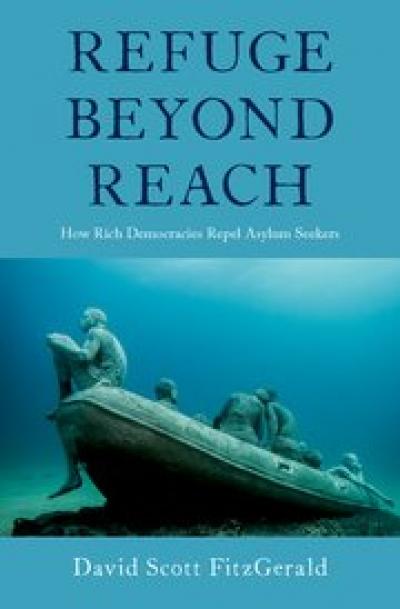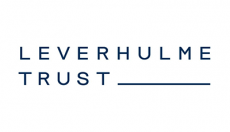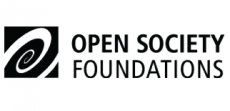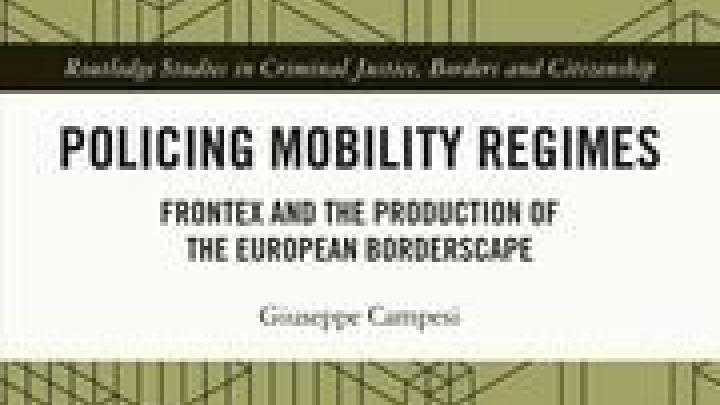Book Review: Refuge Beyond Reach: How Rich Democracies Repel Asylum Seekers
Posted
Time to read
Guest post by Sevda Tunaboylu. Sevda has recently completed her PhD at Pompeu Fabra University (2021). Currently, she is doing research on refugees’ onward migration decisions in Turkey and Greece. She has experience in consultancy research on migrant and refugee rights. She holds a research master’s degree in Migration Studies at University of Pompeu Fabra (2017) and completed another master’s degree in Social Development Practice at University College London (2015) as a Jean Monnet scholar. Previously, she completed her BSc in Political Science and International Relations at Bogazici University (2013). She is on Twitter @TunaboyluSevda.
Review of Refuge Beyond Reach: How Rich Democracies Repel Asylum Seekers by David Scott FitzGerald (Oxford University Press 2019)

The book does not limit itself to the present or to one region but provides an overview of remote control dating back to the 1930s and 40s and discusses cases from Palestine, Canada, the United States, the European Union, and Australia. It does so through analysis of asylum laws, policies, court cases, and reports by government agencies, nongovernmental organisations, and academic studies. FitzGerald explains the entangled history of remote control concisely, capturing the attention of the reader from the beginning.
He starts his book by introducing the term ‘catch 22’ to explain the paradoxical situation whereby refugees can only seek asylum once they enter their destination country’s territory, even though they are prevented from remaining in the territory through a myriad of remote-control tools. He further details the concepts of domes, buffers, moats, cages, and barbicans to explain today’s remote-control tools on air, land, and sea borders. Based on his analysis of the origin and types of remote control around the world, FitzGerald's contribution to the academic debate can be organized around three main points.
The first contribution of the book is to show the reader that the problem is not the capacity of governments to welcome refugees, but the lack of willingness to do so due to a complex and overlapping set of factors. These include: the trumping of humanitarian concerns by the securitization of migration control; the enmeshing of refugees in a system designed to target terrorism; realpolitik in which governments’ responses to refugees change according to their political agenda (for example, welcoming refugees to humiliate the governments of communist countries whose citizens sought asylum in the West); and media representations of refugees as dangerous threats.
The second contribution is a wide-lens perspective on different types of remote-control involving air, land, and sea travel. Remote control on air, which FitzGerald refers to as the ‘dome’, extends to airlines and airports across the world through visa policies, imposing carrier sanctions to airlines that carry passengers who do not comply with entry requirements, and posting of immigration liaison officers at main countries of origin and transit. These tools, adopted since the nineteenth century, have become mainstream today. Remote control on the sea is predominantly done through maritime interception of boats. Maritime interceptions, however, are only effective in relation to other remote-control tools. These include: buffer states where intercepted refugees and migrants are returned or sent; the caging of asylum seekers offshore with the goal of restricting judicial and civil society monitoring; softer forms of caging, such as public campaigns encouraging migrants to stay home; and barbican spaces at the external borders of the state. FitzGerald shows these remote-control tools to be intertwined and reliant on each other for effectiveness.
The third contribution, and arguably the most important one, is FitzGerald’s review of the constraints on governments’ remote-control hegemony. Foreign relations are one such constraint. In particular, relationships with buffer countries play an important role in facilitating or impeding a state’s remote-control efforts. Another constraint is the judicial system. For example, the European Union’s supranational courts can constrain push backs at sea and violations of the non-refoulement principle, yet their influence remain limited. Meanwhile, the strong rights of territorial personhood in the United States and Canada limit, modestly, the use of barbican strategies at external borders. A further constraint to government’s hegemony lies in the capacity for civil society organisations to monitor, gather evidence, and organise public outreach campaigns regarding the impact of government remote control policies. An example of this are the testimonies of whistle blowers, NGOs and media regarding the conditions on Nauru and Manus Island—Australian offshore detention centres. Likewise, in the United States, pressure groups have won victories for asylum seekers who have reached the American territory. Finally, mobile phone technologies and social media allow asylum seekers to share information with the world instantaneously.
Given their vast human cost, it is devastating to see affluent countries repeatedly use remote control tools. However, FitzGerald ends the book in an encouraging tone, urging his readers to do a better job at monitoring what happens to asylum seekers who are kept far away from public eye, behind the closed doors of airport international zones or in maritime controls at high sea. For him, an integrated advocacy, coupled with a strong judiciary system, is the only way to hold governments accountable for the harm remote control policies inflict on asylum seekers. Overall, the book is a great source of information for students, academics, and experts in the migration field. Due to its comprehensive nature, it is also suitable for curious readers who do not have a background in migration and remote control.
Any comments about this post? Get in touch with us! Send us an email, or post a comment here or on Facebook. You can also tweet us.
__________
How to cite this blog post (Harvard style)
Tunaboylu, N. (2022) Book Review: Refuge Beyond Reach: How Rich Democracies Repel Asylum Seekers. Available at: https://www.law.ox.ac.uk/research-subject-groups/centre-criminology/centreborder-criminologies/blog/2022/04/book-review-0 [date]
Share
YOU MAY ALSO BE INTERESTED IN
With the support of









